December 13, 2012 Awesome Sunset Then Geminid Meteor Shower

Given there has been little to shoot this year(for sure storm wise) and the early morning counts of meteors were decently high(120 per hour), I became pretty serious about doing an all nighter for meteors. Something I just don't do anymore, as the vast majority of showers really suck. I never go out to shoot them anymore, but I had it set in my head I was going to this night. But would clouds kill that idea anyway. Early that looked quite possible. Then I began to wonder, I wonder if an epic sunset could be pulled off, then a great night of meteors as the clouds lifted north. Sure enough that's what happened. Best sunsets happen when the western or southwestern edge of the cloud deck/clearing isn't too far away and then completely clear behind that, so the sun really gets on things. That looked like a lock. So I went out for sunset first, something else I also really never do.

My sister and two other photographers would be there. Though it sure felt like I was the only one shooting it with a tripod during the best time for a camera. The lighting got sick. Images on the lcd looked really really silly saturated, the shadows simply needed opened up. And that was and is always the trick. With Canon, if they are nearly clipped black shadows you try to open up, you can count on pattern noise in vertical bands...an ugly mess. So it was a matter of letting the sky there blow out a hair and try to also pull it back down. Even with this huge ol dynamic range, if hit right you can largely do it in one exposure. Photoshop is now pretty damn good at pulling back highlights. Each time I see that ugly pattern noise, when having to really push the shadows, I wish I had a Nikon/Sony sensor that doesn't have that problem. Oh well. Canon will get that figured out eventually. Invested in glass now, though ironic almost none of it has wound up being Canon anyway(I should have went Nikon when going full frame again and bought the same 3 lenses but for Nikon). The sunset and meteor images on here are a mix of Samyang 14mm, Zeiss 21mm and Sigma 50mm. The above has to be the Zeiss 21.
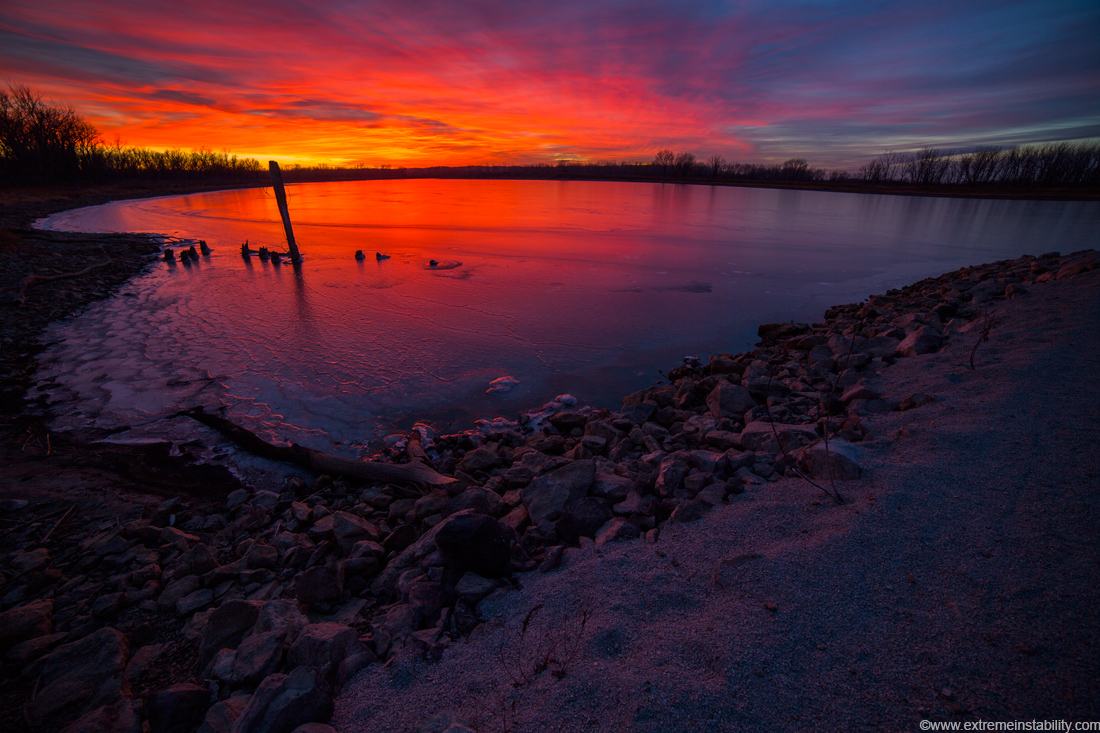
Samyang 14mm. I thought it looked better without the distortion fixed applied. Course now I think I'm seeing mustache pattern right side of ice. Could be the land, probably not.
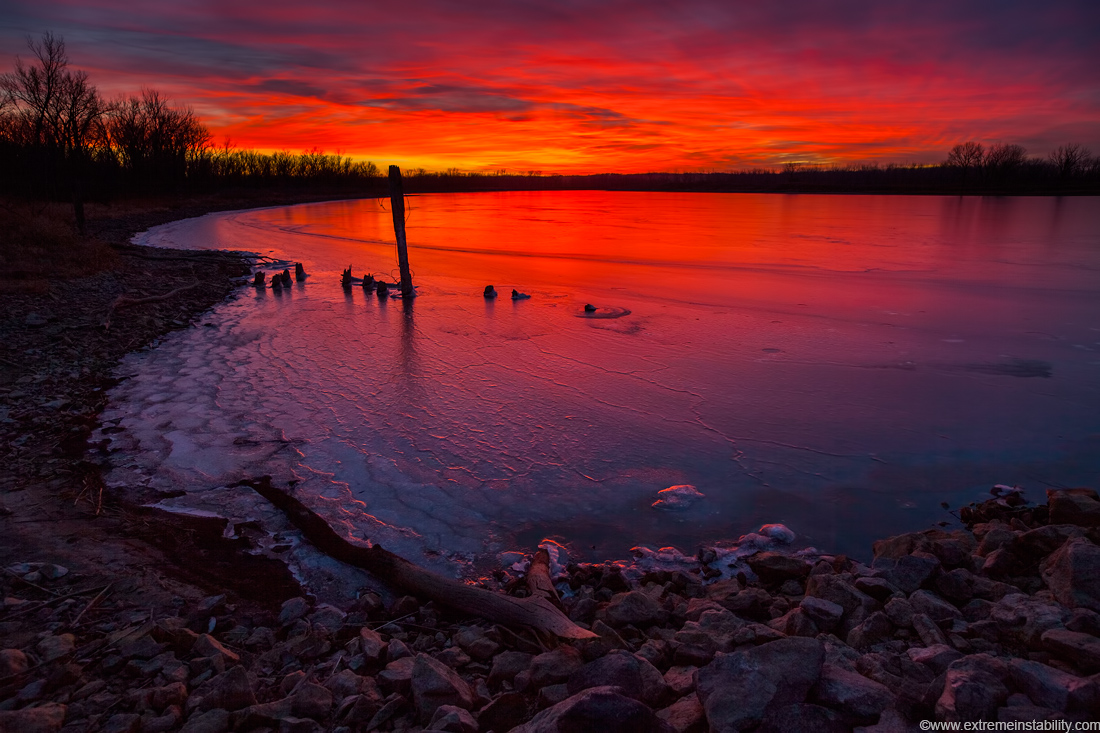
This shot had a lot of that vertical pattern noise in the shadows(which were really pushed). The rocks hide a lot of it. The flat ice area near the right side rocks needed smoothed out to try and hide it. Current Nikon's with the Sony sensors this would not have been an issue. C'mon Canon hurry up. I want to shot two exposures even less knowing another camera maker can do this without that. And I never bother with another exposure. Usually too busy changing lenses and trying to get as much as I can before it is all gone, as this stuff doesn't last long at all.
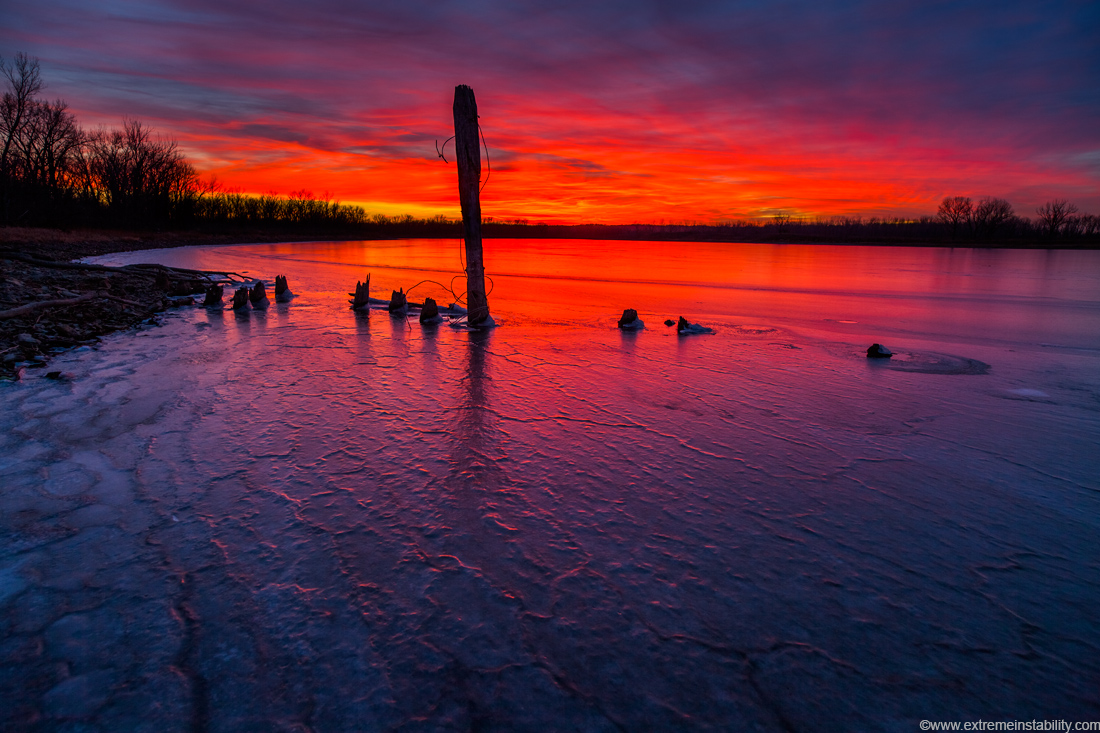
It's bad when you have to step big off the shore to get to ice that will at least barely hold you lol. Just this one area would work. You'd for certain fall in by those pilings or right off the shore. It just looked too cool to not do it. As far as water depth goes, you could easily walk across 75% of this anyway. I've taken my kayak out here and most of it your paddle can hit.
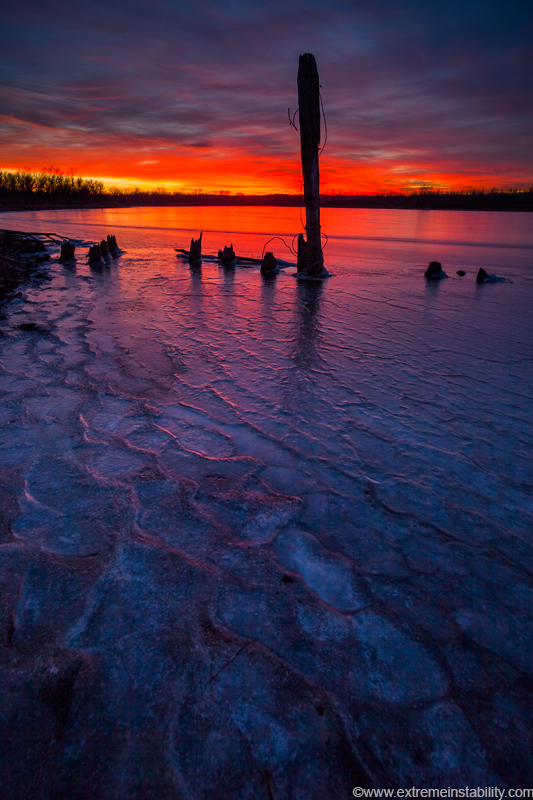
One exposure, no pattern noise in the pushed shadows. So even with Canon sensors right now you can cover a big range. Just really have to "expose to the right" of the histogram and maybe a bit over the edge. It is a pretty sharp wall where that pattern noise will jump out after opening those shadows. 2/3 stop less exposure here and I'm sure it'd have been right there waiting in the shadows.

These aren't in a perfect order. Basically plenty of clouds early when really the meteor shower was the best. And it was the best one I've seen since a crazy one in like fall 2001. Think that one was over 1000 meteors an hour. This one was 120 or so, which is really quite good and fun to watch. I had two cameras going for this, usually set for 20 second exposures. I should have went less to darken the sky on some but the gap between frames is annoying. If a camera can shoot at 4 frames per second, you'd think doing 20 second consecutive shots that the gap would be 1/4 second and you'd be fine. But it's longer. More like a second when shooting this way. And no there's no noise reduction turned on and this was in RAW. I mostly wanted to just get a crazy fireball photo if there was one, so going longer felt right. I should have had stacking in mind and left one of the cameras pointed due north the whole time. Also I'd move cameras to get clouds out of the frame.
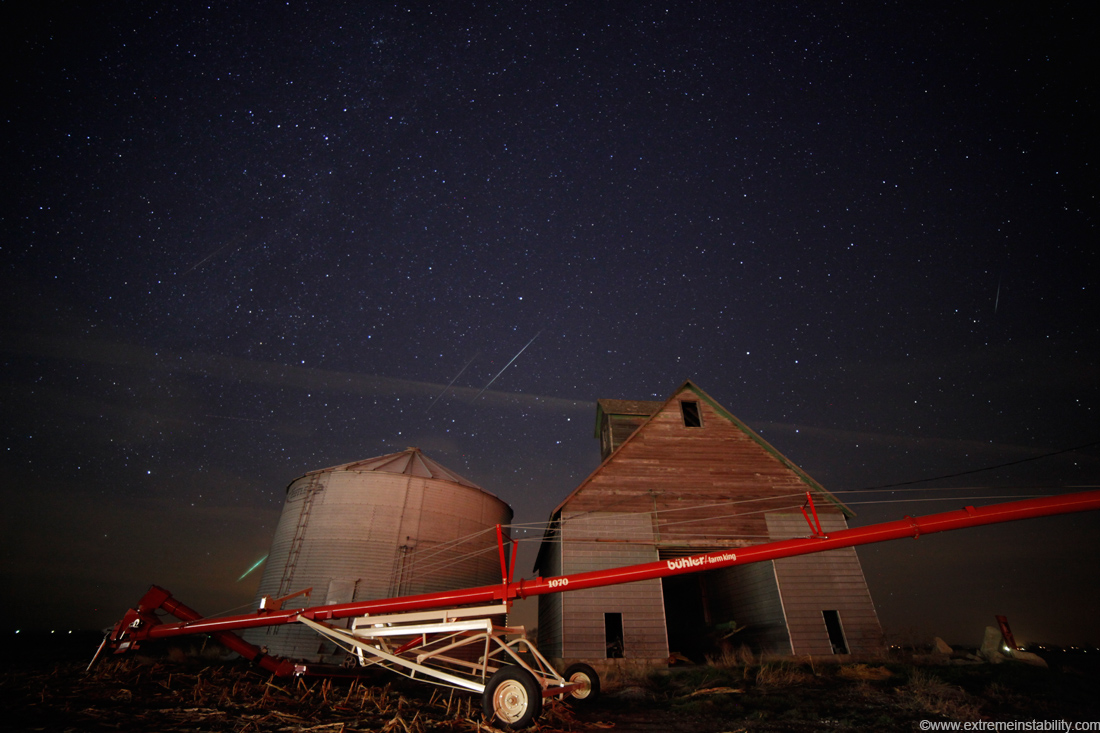
Same as the above stack but leaving out the star trails. This is really easy if you don't have clouds and your sky is the same lightness on each frame. Stack the next meteor image. Click add layer mask. On that mask erase just the meteor with a brush(white reveals black conceals on the mask). You don't have to be real precise. Then just click control i to invert that mask, so the meteor then is all that shows. No sense erasing the whole sky when you can just erase the meteor on the mask then invert it. You can also see what you are doing then, without having to adjust opacity to see the meteor. It's a pain if there are clouds moving through as my better one had. In that case you have to get pretty precise with your brushing around the meteor.
Notice that early while facing north meteors are coming from a place to the northeast/right. They radiate from the constellation they are named from Gemini. As that rises the north facing orientation will become more downward as you'll see on other later stacks.
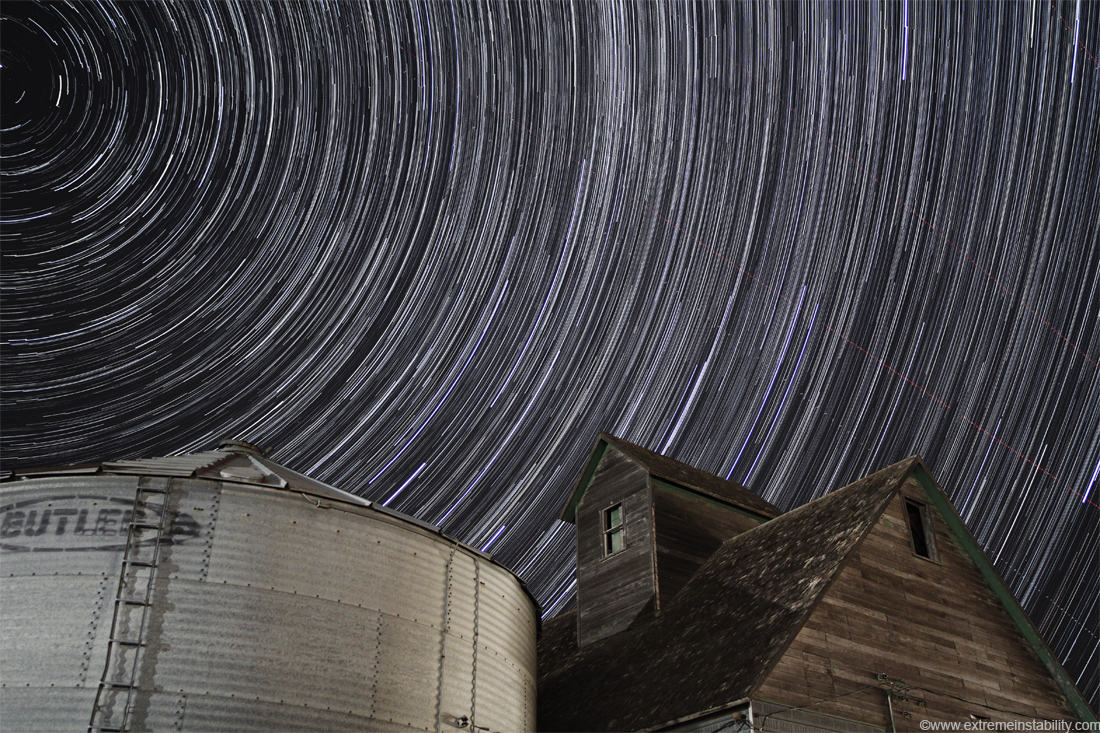
A long sequence that didn't result in much.
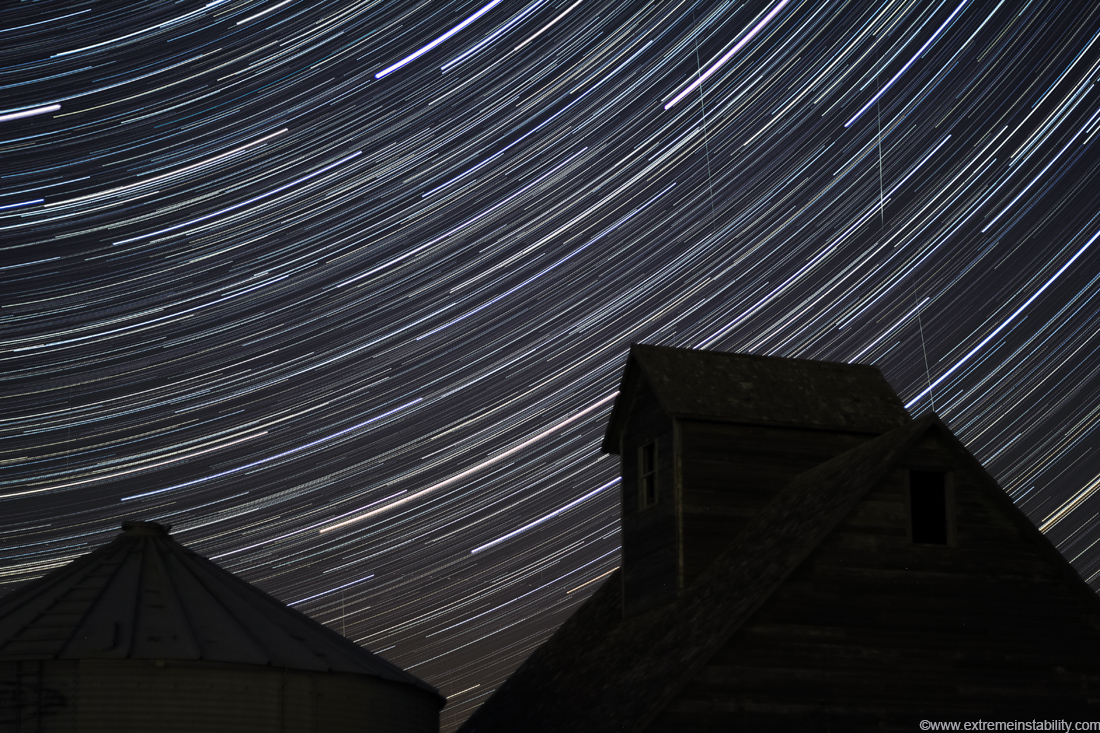
With the star trails they are harder to see anyway.

Same without the trails. I should have left one camera pointed right like this the whole night. Notice facing north now they are more downward as Gemini has now rotated higher in the sky. They can streak anywhere in the sky, but their tails point to the same spot.
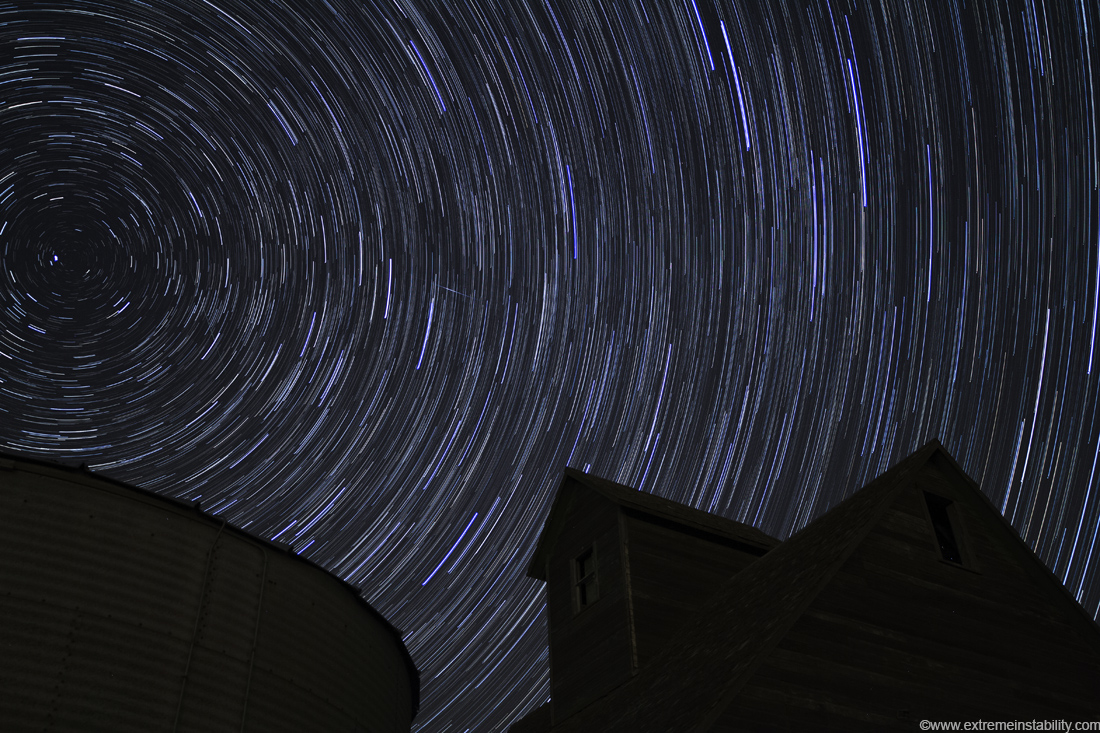
The one streak in the middle was probably a satellite.
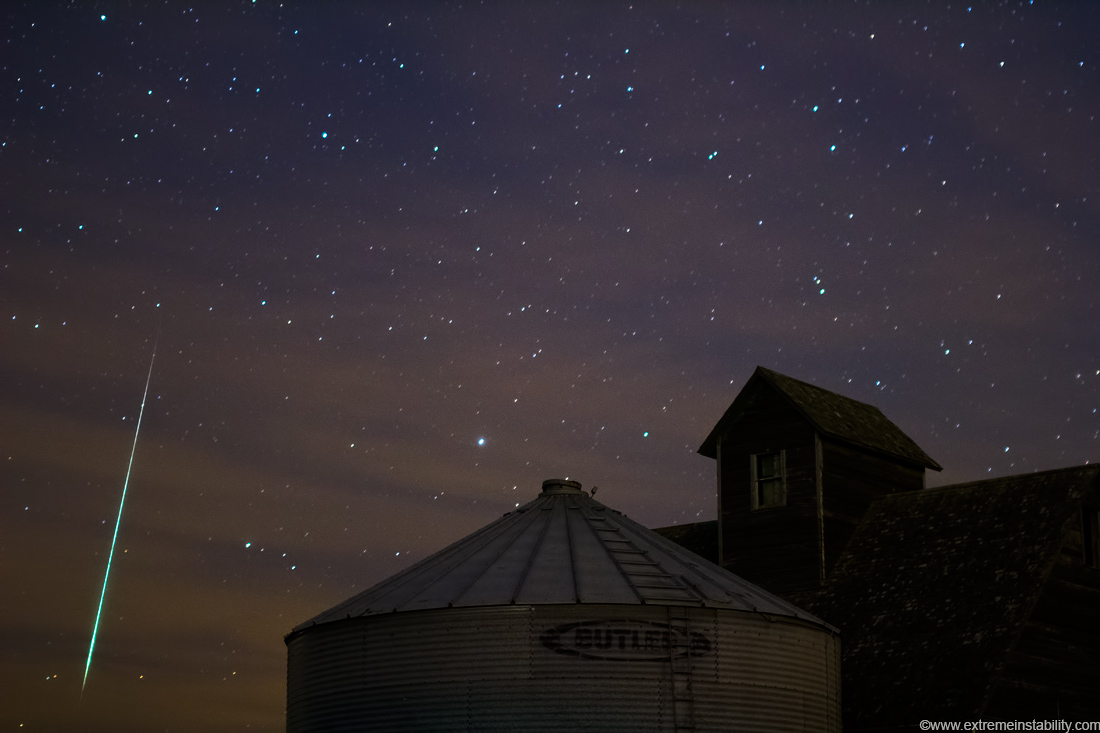
Figures one of the better meteors I got, the focus on the 50mm was a hair off towards the camera. It was F1.6 but I think even so the stars shouldn't be so crappy. It's not real encouraging I did that with the new Sigma with a real focus ring and not the ol Canon F1.8. I was using a far off house with live view 10x to get focus right. But the heat wave distortion deal wasn't making that real easy. This seems way too far inside anyway, so was probably bumped. The good thing is I didn't do many shots like this before moving it and refocusing.
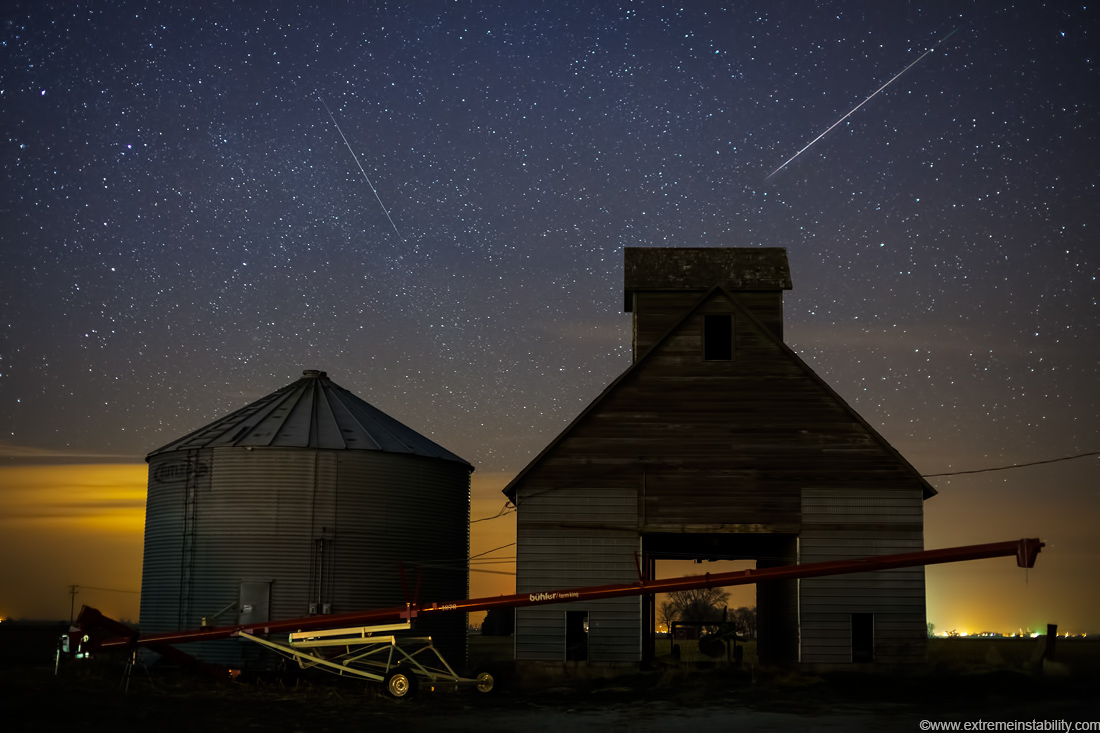
The left one is a Geminid, the right one is not, as it isn't radiating from the same spot in the sky. It's much later on in this one. See facing north now Geminids are now coming down from the northwest/upper left. as Gemini is way over there.
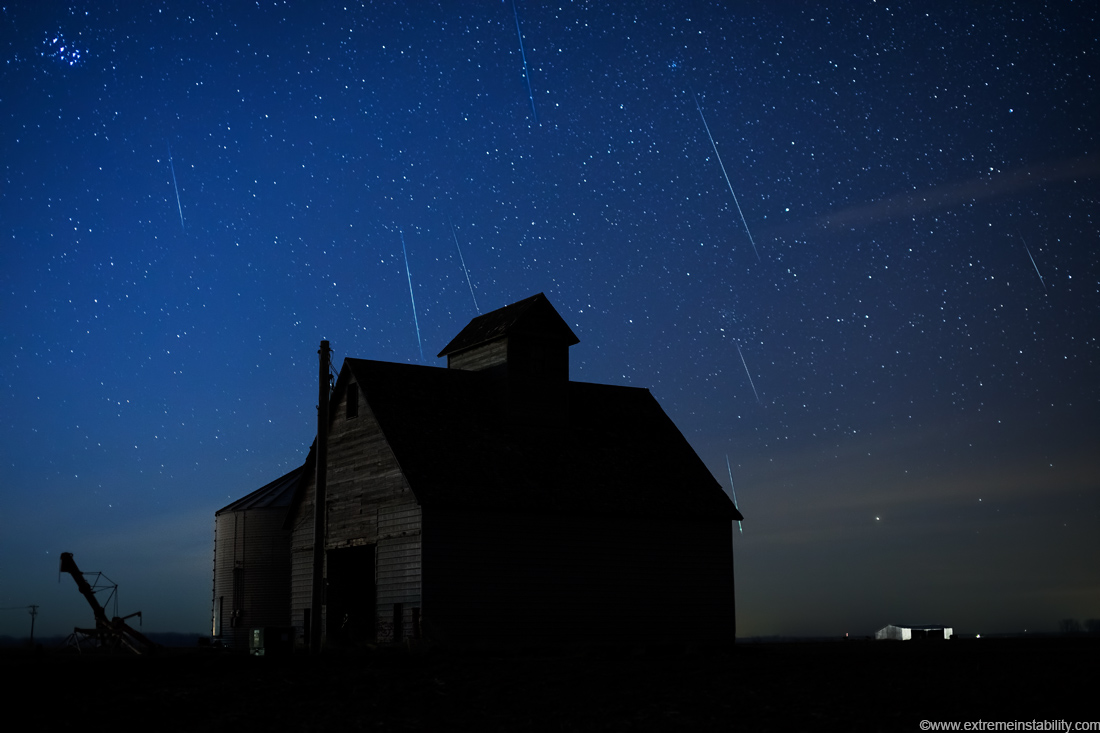
Looking west, Geminids.
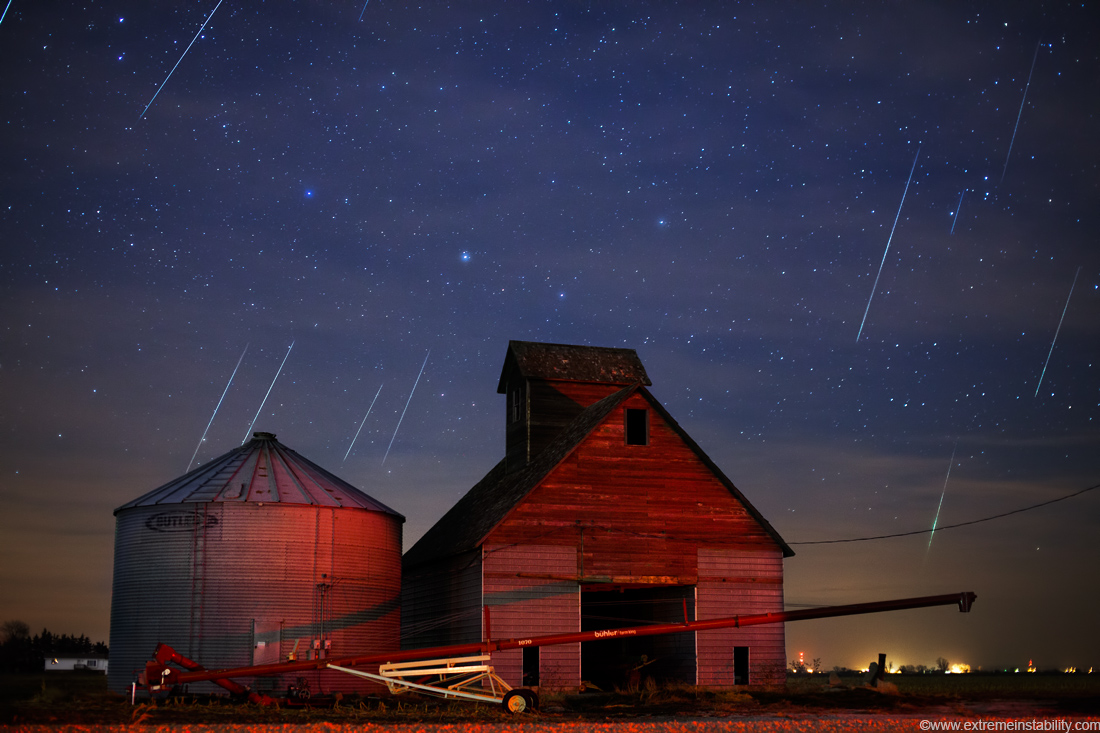
North at Geminids earlier in the night. I've not had much experience shooting meteors other than a few complete fails, largely because there was nothing to shoot. Learned a bunch this time and wish I had a do over and also clear skies the whole time. The above is 50mm on a full frame. 1600 ISO, F2 for 20 seconds. I should have done 10 seconds for a darker sky. But again, that gap between frames is annoying long when on timed consecutive shooting for whatever reason. Mindset was screw that, I'll miss a good meteor if I have more frequent frame gaps. Lowering the ISO wouldn't cut it either as then you'd just dim the resulting meteor anyway. Mostly though I just wish I had clear skies this whole time and left it facing one way alllll night. South wasn't an option as Omaha is south. North was the worst place for clouds basically. Well I guess early the bigger gaps were that way. But eventually all south was clear as north held onto clouds.
Anyway, great sunset and great meteor shower. Towards 4 a.m. or so it really seemed to be tapering off, which was kind of annoying since by then it was super clear. I was soon highly tired. Think I gave up around 5 then tried to get enough naps in all day without going over board and screwing up my sleep pattern. The all nighters really are tough. Shot for a couple days later. At the same time doing all the work to put accounts like this together. Yay for being done. That is a freaking ton of images to go through if you have 2 cameras shooting 20 second shots from 8pm to 5am. One night of files totalled more space than all the files I have kept over the last 10 years lol. All but the ones that matter have now been deleted.







